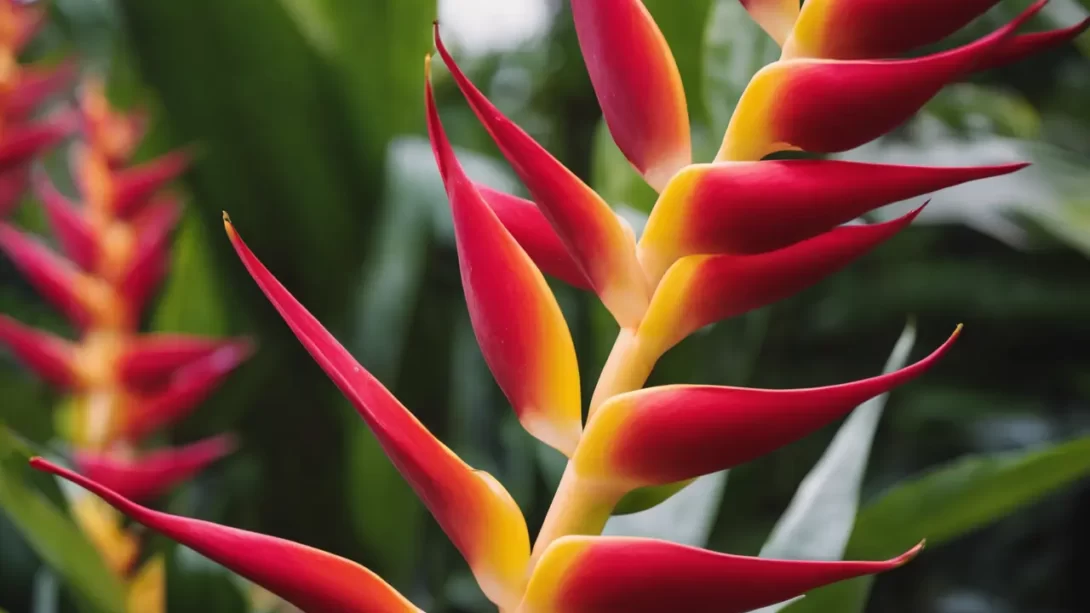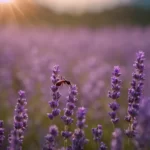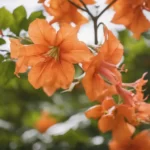Heliconia, a genus of tropical plants known for their striking and vividly colored flowers, is a symbol of exotic beauty in the plant world. Often mistaken for birds of paradise due to their similar appearance, Heliconias are a favorite among tropical garden enthusiasts and florists. This article will explore the diverse color range of Heliconia, a feature that makes them stand out in the lush greenery of tropical environments.
Heliconia
Belonging to the family Heliconiaceae, Heliconia is native to the tropical Americas, with some species found in the Pacific Islands. These plants are characterized by their large, banana-like leaves and unique inflorescences, which are actually bracts, or modified leaves, that house the true flowers within. Heliconias are not just ornamental; they play a vital role in their ecosystems, providing food and shelter for various bird species, particularly hummingbirds. The types of Heliconia vary significantly in size, form, and, most notably, in color.
The Color Palette of Heliconia
The colors of Heliconia are as diverse as the species themselves. The most commonly observed colors include:
- Red: One of the most striking colors, red Heliconias are bold and eye-catching. Varieties like Heliconia rostrata, also known as the hanging lobster claw, are renowned for their bright red bracts.
- Orange: Ranging from bright, fiery tones to softer, more muted hues, orange Heliconias add warmth and vibrancy to their surroundings. Species like Heliconia psittacorum often showcase this lively color.
- Yellow: Yellow Heliconias, such as Heliconia bihai, offer a cheerful and bright appearance. These can range from lemony yellow to deeper golden hues.
- Pink: Less common but equally enchanting, pink Heliconias, like some varieties of Heliconia chartacea, present a softer palette that contrasts beautifully with their typically green foliage.
Each of these colors can be found in various shades and combinations, contributing to the Heliconia’s reputation as a visually dynamic genus.
Factors Influencing Heliconia’s Color
The vibrant colors of Heliconia are influenced by a variety of factors, both environmental and genetic. Understanding these factors can provide insight into why certain Heliconia plants exhibit specific colors.
Environmental Influences
- Sunlight: The intensity and duration of sunlight can impact the vibrancy of Heliconia’s colors. More sunlight often leads to brighter and more vivid bracts.
- Soil Type: The mineral content and pH of the soil can affect the coloration of Heliconia. Nutrient-rich soils tend to produce more vibrant flowers.
- Climate: Heliconias thrive in tropical climates. Variations in temperature and humidity can influence their growth and color development.
Genetic Basis for Color Variation
- The inherent genetic makeup of Heliconia plays a crucial role in determining its color. Different species and hybrids naturally exhibit different color patterns.
- Hybridization, either naturally occurring or through human cultivation, can result in new color variations, sometimes combining the characteristics of parent plants.
Heliconia’s Color and Pollination
- Heliconia’s bright colors are not just for show; they play a critical role in attracting pollinators. The color of the bracts can be a signal to specific types of pollinators.
- Hummingbirds: Many Heliconia species are pollinated by hummingbirds, attracted to bright red and orange bracts.
- Bats and Insects: Some species of Heliconia may also attract bats and insects, depending on their color and nectar properties.
The relationship between Heliconia’s color and its ecological role underscores the importance of these vibrant hues in the survival and propagation of the species.
Cultivating Colorful Heliconia
Gardeners who wish to grow Heliconia can follow certain practices to encourage vibrant color development in these tropical plants:
- Optimal Sunlight: Ensure Heliconias receive sufficient sunlight, as this can significantly impact the brightness and intensity of their colors. However, be mindful of too much direct sunlight, which can cause scorching in some species.
- Soil Conditions: Plant Heliconias in well-draining soil rich in organic matter. The right soil composition will support healthy growth and enhance color vibrancy.
- Regular Fertilization: Regularly fertilizing the plants can provide essential nutrients that promote rich, colorful bracts.
- Adequate Watering: While Heliconias thrive in moist environments, it’s important to balance watering to prevent waterlogging, which can affect plant health and color expression.
Conclusion
Heliconia’s array of colors, ranging from fiery reds and oranges to sunny yellows and subtle pinks, is a testament to the plant’s incredible diversity. These colors are more than just visually stunning; they play a crucial role in the plant’s survival, acting as beacons to attract specific pollinators essential for their propagation. The color of Heliconia is a product of both genetic makeup and environmental conditions, making each plant unique.
For those looking to add a splash of tropical vibrancy to their gardens, cultivating Heliconia can be a rewarding endeavor. By providing the right conditions and care, gardeners can enjoy the full spectrum of colors these magnificent plants have to offer. In the natural world, Heliconias stand out in tropical landscapes, not only adding beauty but also contributing significantly to ecological diversity and balance.
In summary, the color of Heliconia is a blend of nature’s artistry and practical functionality, offering both aesthetic pleasure and ecological benefits. Whether in a tropical garden or a floral arrangement, the vivid hues of Heliconia are sure to captivate and enchant.




